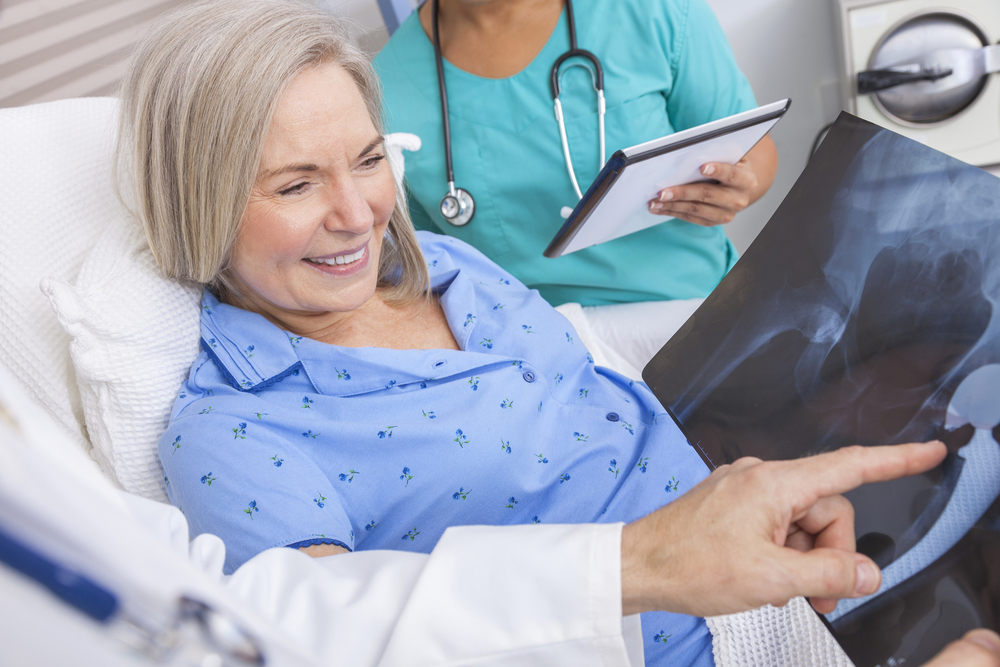
Hip Replacement Recovery Tips To Encourage Optimal Healing
One of the most critical aspects to the success of long-term hip replacement recovery depends upon you and what you do (or do not do) in the days and weeks directly following your surgery.
Hip replacement recovery is something that takes time, and is personal to each patient. EmergeOrtho-Triangle Region’s board-certified, fellowship-trained joint replacement specialists are experts in all aspects of joint replacement diagnosis, surgery, and recovery. Our patient-centered approach to care, coupled with our commitment to practicing the latest innovative advancements in subspecialty orthopedics, make us the top joint replacement leaders in the region.
Your adherence to the hip replacement surgery recovery timeline and plan provided by your orthopedic hip surgeon will help encourage a safe and effective healing process. Many people are able to return to the activities and lifestyle they enjoy with improved mobility, reduced pain, and little to no discomfort.
Top Five Hip Replacement Surgery Recovery Tips
Our joint replacement experts share their top five tips for parietal or total hip replacement recovery to help ensure a successful outcome.
1. Care for Your Wound
Although hip replacement surgeries vary, the incision site will usually be held closed by stitches, staples, or sutures beneath the skin. The complication rate for hip replacement surgery is low. However, an infection can occur if the incision site is not properly cared for. Be sure to follow all directions instructed by your doctor, but generally, these are some helpful tips to follow:
- Keep the wound clean and dry
- Change the dressing as often as directed by your doctor
- Wait to shower or bathe until directed by your doctor
2. Maintain a Healthy Diet
A loss of appetite for the first few weeks is common when recovering from hip replacement surgery. Still, a balanced, healthy diet can help speed the recovery process. Your doctor will specify what the exact diet should entail, but good nutrition is important to promote tissue healing and restore muscle strength. Drink plenty of fluids, and avoid alcohol until your doctor gives the go ahead.
 Not only is a balanced diet important for the recovery of your body, but it is also beneficial for maintaining a healthy weight. Excessive weight puts extra stress on your healing hip joint.
Not only is a balanced diet important for the recovery of your body, but it is also beneficial for maintaining a healthy weight. Excessive weight puts extra stress on your healing hip joint.
3. Physical Therapy
Exercising the affected joint is critical to your recovery. It is best to enroll in a physical therapy program with a certified physical therapist who can train you on proper techniques and movements. Your physical therapy program is tailored to you, but it will typically involve exercises and stretches that:
- Increase blood flow to the hip joint
- Develop muscle strength
- Improve range of motion of the hip
- Reduce the development of scar tissue
- Build flexibility gradually
4. Exercise
The physical activity should not stop with physical therapy. Your doctor or physical therapist will most likely assign you critical at-home exercises to regularly perform multiple times a day. This can include specific exercises, a graduated walking program, and/or normal household activities.
5. Prepare Your Home
This is a step best completed prior to surgery, and doing so will make your post-operative experience that much more comfortable and manageable. Given that you will most likely be using a cane or walker initially, it is best to rearrange your living space to make room for these assistive devices. Some patients pick one floor to live on to minimize the use of stairs, but physical therapy will teach you stair-climbing techniques before you leave the hospital. Other tips include:
- Keep things you frequently use nearby to where you will be resting, so you do not have to keep reaching or bending down.
- Remove any rugs, cords, or other loose items that you and your assistive device could trip on.
- Make sure you have a strong, firm chair to sit on to provide proper support for your hip.
- Try to purchase a grabbing tool to minimize your need to bend or reach
Use EmergeOrtho’s Total Hip Replacement Recovery Calendar
These tips are essential for a strong recovery, but now EmergeOrtho offers patients an additional tool. The Total Hip Replacement Recovery Calendar includes a recovery timeline, a list of what to expect at each milestone, and follow-up appointment reminders.
Use the blank spaces on the calendar to describe your progress and anything you need to discuss with the surgeon. Keeping track of appointments, progress, and any concerns will help prevent complications and speed your recovery.
Hip Replacement from the Best Practice In the Region
The joint specialist team at EmergeOrtho-Triangle Region is prepared to answer any of your recovery questions or assist you with any of your recovery needs. Click here to schedule an appointment at one of our locations or contact us at (919) 220-5255.







